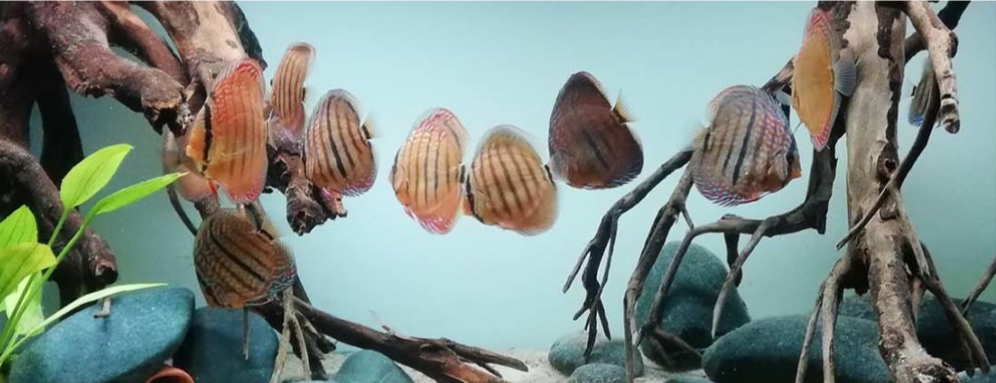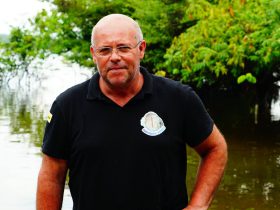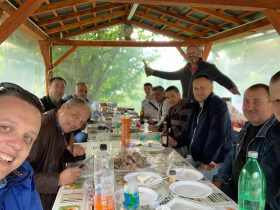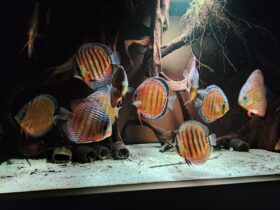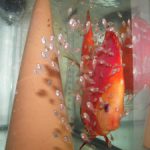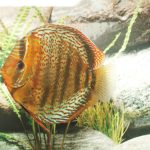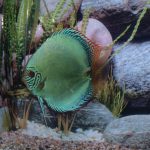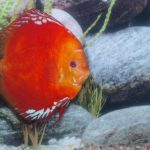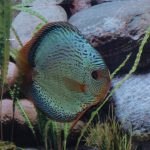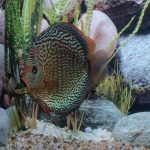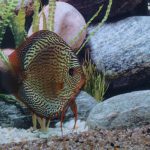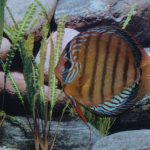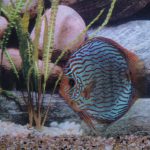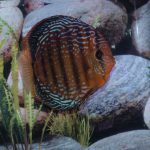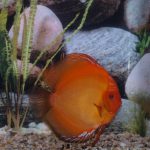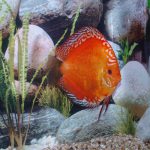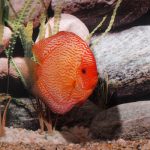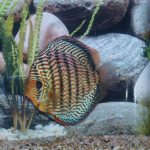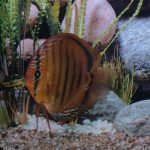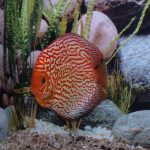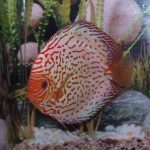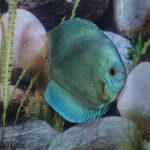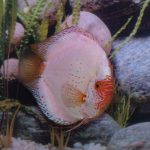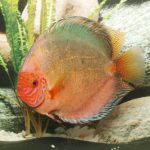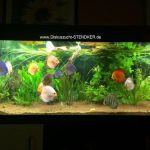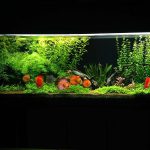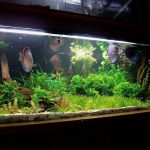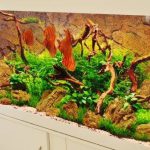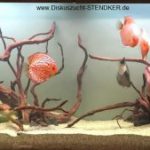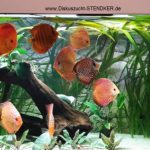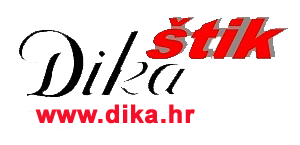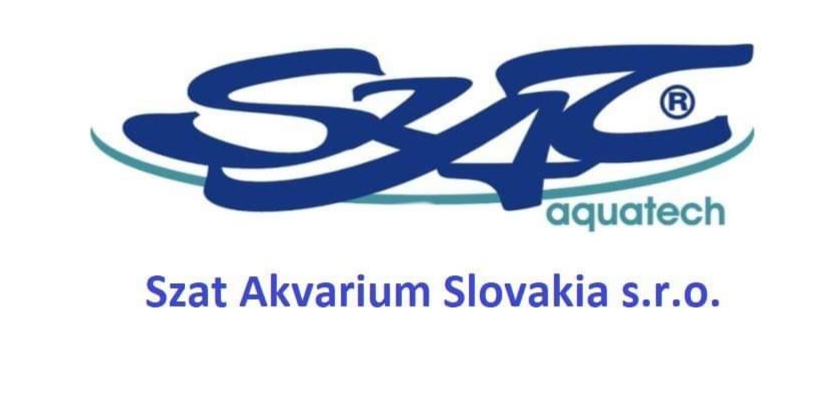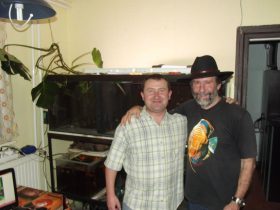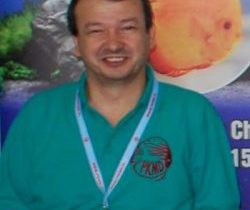Wellcome to the first discus organization in Croatia named Diskusari.
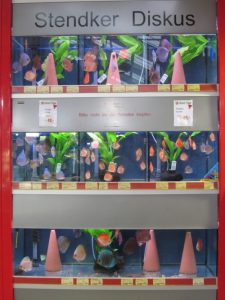 The Discus Stendker is one of the most famous discus breeder in Europe. How did you start and why only discus?
The Discus Stendker is one of the most famous discus breeder in Europe. How did you start and why only discus?
Everything started in 1965 when my father, Heinz Stendker, established the basis of our Discus breed with four Discus fishes in one multi-species-aquarium. Until Czechoslovakia did open the border to Germany, besides the Discus we also bred Butterfly Cichlids, Angel Fishes, Rainbow Fishes, Dwarf cichlids, Malawi Cichlids and Coral “PLATIS”. However, at that time a lot of low budget fishes came to Germany from Czechoslovakia. Due to this our sales market for all animals started to decline, except the Discus. At that time we already had a very high quality with the Discus and we have been able to succeed on the market and become more specialized. This year we are already celebrating our 50th company anniversary.
How big is he hatchery, how many aquariums do you have, which type of filtration do you use, and what is the temperature?
We have more than 2000 aquariums with Hamburger mat filter. We keep our Animals at 29 – 30 ° C.
When you prepare a breeding pair what are you looking for (the pair must be of round shape, good colors, …)?
When selecting our breeding pair we choose according to the following criteria:
ability to inherit, brightness and beauty of the colors, the shape of the animals and exceedingly for robustness and strength of the discus fishes.
When the pair is breeding how often do you change the water and what ist he feeding regime?
Within the breeding circles we change 10 % of the water once a day to keep the water parameters in an optimal range. We feed all our animals three times a day exclusively with our own STENDKER-Good Heart complete food, which is containing everything our discus fishes need for a well growth and health maintenance.
How do you raise a discus fry, how often do you feed them and how about water change and cleaning?
The fry stay with their parents for 12 – 14 days before we put them into separate aquariums. From the third day of age we start to feed live Artemia, every hour. At the age of ten days we start with additional feeding our STENDKER-Discus-feed three times a day and after four weeks we only feed our own liked feed mix 3 times a day. In the fry breeding we have a daily water change between
10 – 20 % and the aquariums get a cleanup 1 – 2 times a week.
What is your suggestion for right water chemistry ph, gh, kh, ms, tds?
For keeping the discus fish we use our German tap water with following water parameter:
PH 7, GH 15, KH 8, MS 800, 29 ° C keeping temperature and a big and powerful longstanding operated underwater filter (Hamburger mat).
Discus Stendker is holding and breeding the same discus sorts since many, many years. Why?
We did start with one color variant and by now we do have 21 different color and color patterns to offer. This color patterns are required by our customers and we are still working on new bred varieties to further improve our range.
Which discus sort is he most wanted and do you know why it is like that?
Pigeon Blood Red and Pigeon Blood blue are our most popular discus color variants because these animals show very bright and intense colors and due to their very individual pattern they seem to be very diverse and unique.
We see you are having a new sort named Dark Angel. Can you tell us something about that sort?
Since 3 years we offer this color variation at the special traders. It has its origin in crossing a Blue Diamond and a Pigeon Blood Silver.
Which fishes do you suggest for Discus tankmates?
All our color variations can be put in one aquarium. This is depending on the individual preferences of the owner. We also published a large amount of accompanying species on our home page:
http://diskuszucht-stendker.de/pöugins_en/pdfs/5._Beifische_zum_Diskusaquarium:en.pdf
In your opinion, which feeding regime is correct for discus fishes, how often do you feed them and what type of food do you use?
In our opinion, our STENDKER discus-feed is the optimal way to feed a discus, and that should be done three times a day.
We can read on your web site that discus fishes are „parasite free“. Can you tell us something about that?
This is not correct. We wrote: our fishes are tapeworm free as well as free from the so-called discus epidemic.
http://diskuszucht-stendker.de/plugins_en/pdfs/Parasitenfreie_Diskusfische.pdf
They are not parasite free but our animals do have a very good immune system. Due to this they are able to get along with the common illness without medication supplements. However, it is absolutely necessary to hold on to a good feeding to keep up the immune system.
What is your opinion about mixing your discus with wilds or Asia discus fishes? Yes or no?
We suggest not to mix our Discus fishes with wild caught or Asian discus fishes, because discus fishes from different countries and breedings require different water parameters and also can bring various bacteria or rather strains of deseases. This can lead to bacterial intolerances. To prevent this risk we advise against mixing.
What do you suggest for new discus keeper?
To newcomers we recommend to read our homepage with special attention. Our online book “basic information around the discus fish” is available in six languages with free access to everyone. Here, you can discover everything about preparing the aquarium, about water chemistry, feeding and a lot more that is necessary for a successful keeping and rearing with our discus fishes.
Are there any important things we didn´t ask but you think they are important for discus keepers?
Please take always care of a high stocking density within your aquarium to ensure the animals eat good and greedy (Cichliden, group min. 10 – 12 animals). In a smaller group, lower than 10 animals, often a dominating animal steps out and this could lead to aggressions in the within the small group. This can be harmonized by raising the stock density, normally 10 – 12 animals.
Very important for a high stock density within the aquarium is to ensure a good water quality (water change at least once a week, good filtration and enough oxygen (respectively with additional aeration stone with membrane pump).
Interview by Jörg Stendker.
